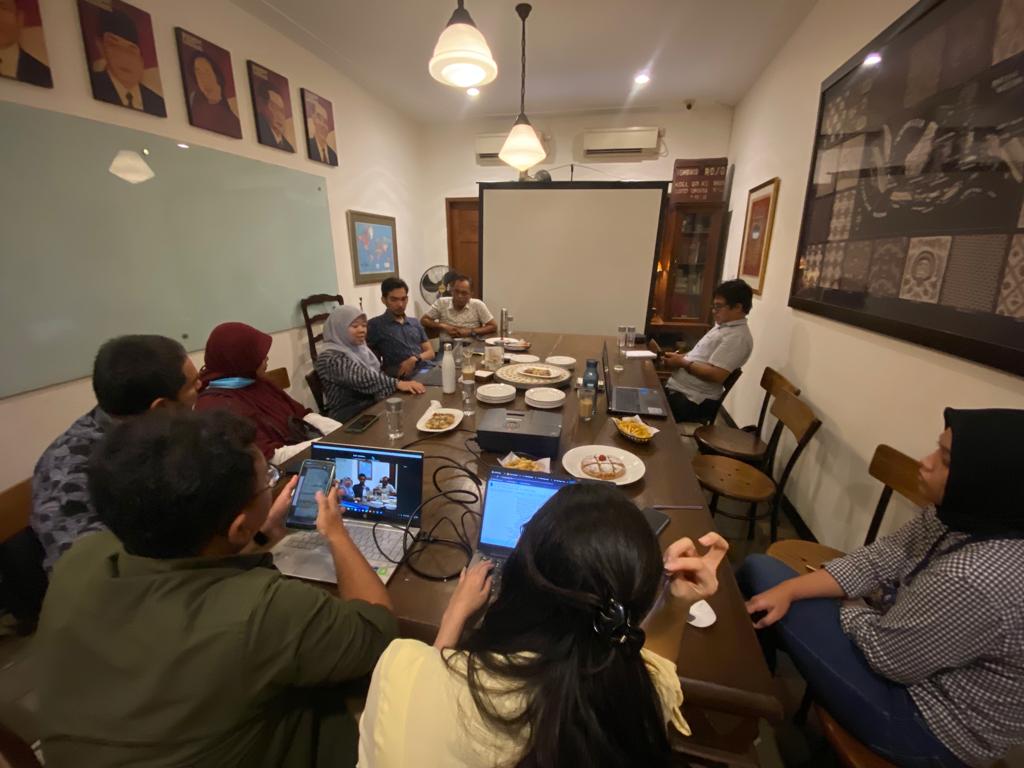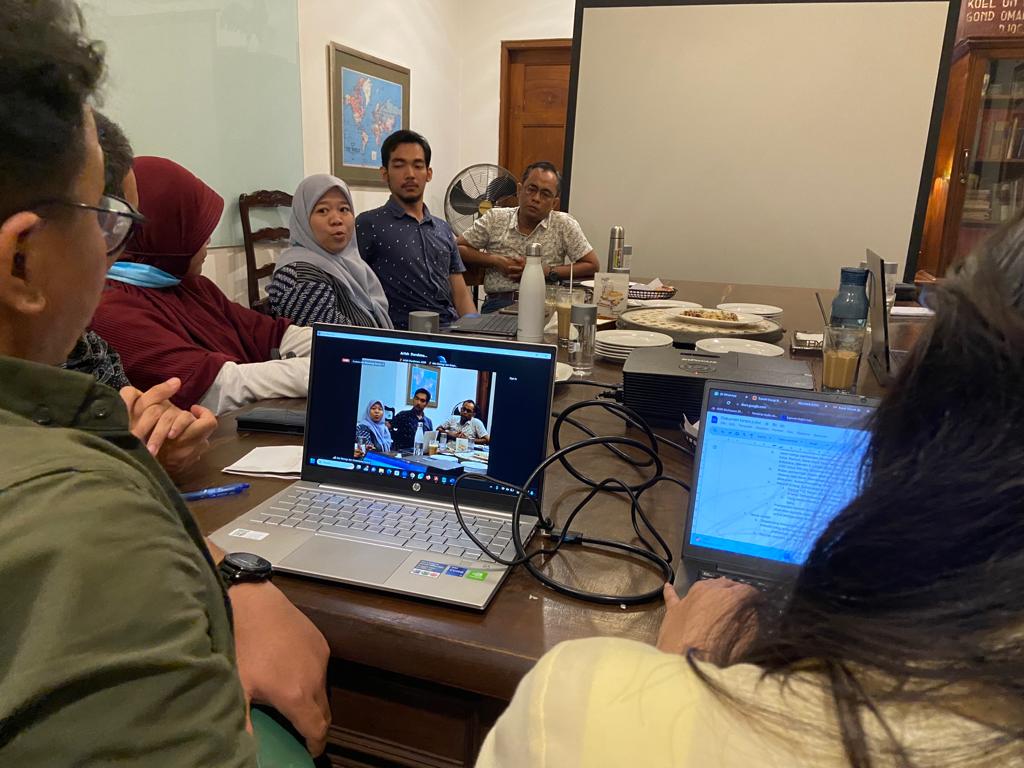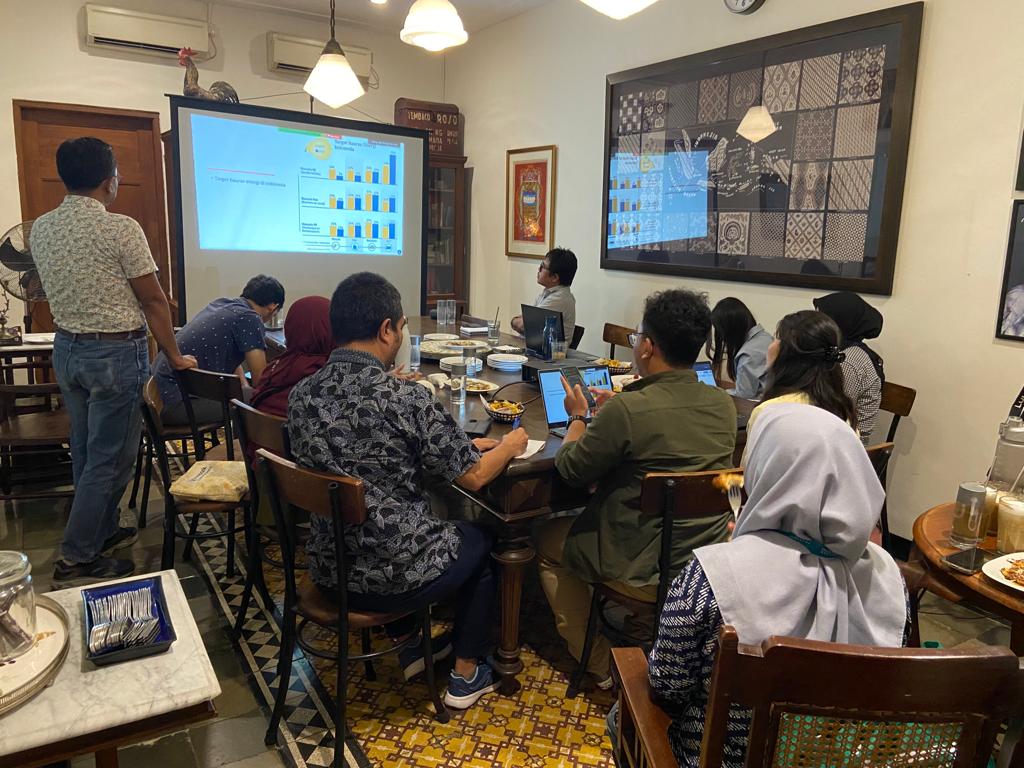
Jakarta, The PRAKARSA - The launch of the Indonesian Green Taxonomy in early 2022 was carried out when Indonesia declared its commitment to a clean energy transition. Energy is the development sector that contributes the most to national greenhouse gas emissions in Indonesia, namely 39%, where the value of carbon emissions is equivalent to 450 million CO2 more per year (BPS, 2000 – 2019, ESDM 2022). Indonesia's commitment to the Energy Transition Roadmap in 2060 covers at least two aspects. First, infrastructure aspects, second is funding. In terms of infrastructure, Indonesia plans to prematurely stop the operation of 33 units of coal-based Steam Power Plants (PLTU). The PLTUs proposed to undergo 'early retirement' include the Cirebon, Pelabuhan Ratu and Paiton PLTUs. In terms of funding, it is in the form of green bonds (green bonds) or mixed financing instruments such as facilitating funding support from the private sector, the financial services industry and philanthropy for the energy transition program as proposed in Energy Transition Mechanism (ETM).
Then, at the beginning of September, the Financial Services Authority (OJK) plans to revise the THI by including coal-fired power plants that are in the process of energy transition in the form of early termination as a group that can be provided with sustainable financing. In the revised plan, captive power PLTUs can be included in the green category if they are in the process of energy transition.
One of them is to include activities/sectors related to captive power PLTUs into the 'green' category if they meet several conditions. For example, if used within the Just Energy Transition Program (JETP)/ETM framework or to support the manufacturing of 'green' products.
Green Finance Researcher for Ecological Action and People's Emancipation (AEER) Muhammad Aulia Anis compared Indonesia's Green Taxonomy with other countries which is still less progressive, and has even experienced a setback with the plan to include PLTU as a green category.
"If you look at the Chinese taxonomy that has been present since 2015, clean coal or clean coal was indeed included in the category green projects but it was finally removed in 2021. Then Thailand's taxonomy included PLTU in the red category. Even the taxonomy from the European Union (EU) asks PLTU to immediately retire early as a commitment to net zero emissions (NZE) 2050," said Aulia in Media Discussion of Indonesia's Green Taxonomy and Just Energy Transition. On Thursday (2/10).
Apart from that, Aulia sees that the THI revision plan shows Indonesia's inconsistency in energy transition efforts. Even though the taxonomy is only one component of Indonesia's energy transition, the THI is a reference and benchmark for decision making in the financial sector investment portfolio.
Program manager PRAKARSA Herni Ramdlaningrum explained that the energy financing portfolio by banks in Indonesia is currently still very large for the fossil energy sector with total financing reaching US$ 25 billion between 2016 and June 2022. In fact, the government should encourage financial service institutions (LJK) including banks to contribute to financing. green projects, sustainable development, carbon trading facilitation, issuance of green bonds or other financing schemes such as green sukuk or green climate funds.



“Indonesia's energy transition plan requires a significant investment of around US$225 billion, whereas the Joint Energy Transition Program (JETP) currently only offers US$20 billion. With this minimal investment, there is a financing risk if banks do not immediately stop investing in dirty energy. First, physical risks in the form of impacts on the physical environment and banking assets due to delays in achieving net zero emissions. Second, transition risk, meaning that if banks do not immediately mitigate it, it will be difficult for them to obtain a supportive business environment," he said.
Meanwhile, Communications 350 Indonesia Firdaus Cahyadi said there is a third way to fund the energy transition through local banks. However, according to research by 350 Indonesia together with the #CleanYourBank coalition, local banks, especially state-owned companies, are still funding coal-fired power plants. For example, Mandiri still invests US$3,1 billion, BRI US$122 million, and BNI US$53 million. “National banks, especially state-owned companies, can be a source of funding for renewable energy development. However, these banks still choose to finance fossil energy. A progressive revision of Indonesia's Green Taxonomy could be an entry point to direct national banks to finance renewable energy and suppress funding of fossil energy. "It's not actually a revision to put captive power PLTU into the green category," stressed Firdaus.

